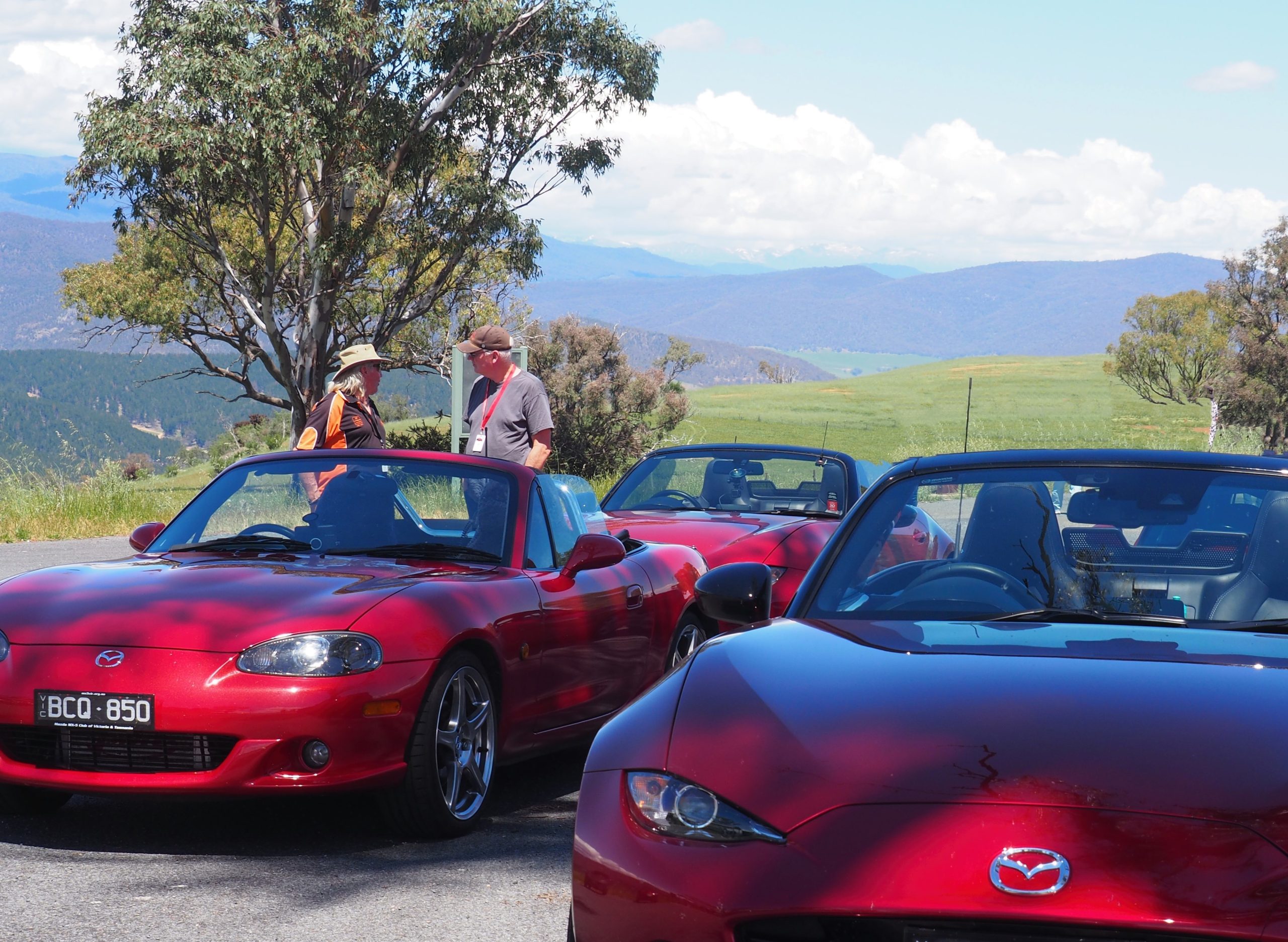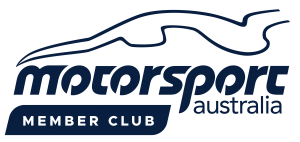Licences
To compete in most (non-race) track events you will need a Motorsport Australia “Speed” or higher licence. (Click here for a description of the Motorsport Australia licence types.) For a Speed you aren’t required to pass a written or practical test.
[A race-level licence (Circuit) requires a medical examination, attending a motorsport lecture and test, and an observed driving session.]
Safety Equipment
For sprints and other track events, you’ll need the following items:
- You must wear non-flammable, neck-to-wrist-to-ankle clothing – wool or cotton is OK; flammable synthetics are not.
- You also need leather, fully-enclosed footwear (normal leather-upper runners are good; thin-soled shoes are ideal). These are compulsory for all speed events in Australia.
- A helmet meeting AS1698 (or equivalent) standard (eg, a motorcycle helmet).
- A fire extinguisher meeting AS1841.5 (ABE powder), minimum 1kg, securely mounted within reach of the driver (metal bracket, not plastic), no more than three years old (as per the date stamp on the base).
- A secondary restraint for the bonnet, required by some organisers, is satisfied by the standard vehicle bonnet latch which already has a secondary catch. Non-standard bonnet restraints need to provide a secondary system. This can be a simple strap through the latch hook and tied to the chassis rails, allowing limited bonnet travel. Elastic type cords are prohibited. Bonnet pins or other permanent modifications are not necessary; elastic cords are prohibited.
- A 150mm blue triangle (sticker) on the body marking the battery location, to help marshals find the battery quickly should they need to disconnect it. (You can usually buy one on the day or make one up using coloured tape.).
- Front and rear tow hook indicators – indicators are generally not required for standard vehicles but can be made up using coloured tape if needed. NC and ND models will need to fit the screw-in, tow hook from the car’s toolkit on to the front bumper.
- Metal valve caps.
Additional safety equipment
Although not a requirement, once you are committed to Sprints, we strongly recommend that you invest in a race seat, race harness and a Frontal Head Restraint (FHR or HANS – head and neck support) device, which fits over your shoulders and anchors your helmet to stop your neck bending too far, reducing the likelihood of head and neck injuries. An FHR/HANS device requires a compatible helmet with built-in attachment studs.
At the very least, we urge you strongly to consider an FHR-compatible helmet now so that you can add an FHR device later without the need to replace your helmet.
As you become more serious about the sport, we recommend you also think about fitting your car with:
- a race seat, to give you far greater support and comfort at race speeds than your standard car seat. (This is a pre-requisite for the installation of a harness.)
- a five- or six-point racing harness to give you far greater stability and safety. (This a pre-requisite for the installation of a FHR/HANS device.)
- an FHR/HANS device, which requires a compatible helmet.
Combined, a quality seat and harness make you much more at one with the car, ensuring you’re sitting in your seat, not on it.
- rollover protection with FIA-approved helmet padding, to protect you in the cabin in the unlikely event of a rollover (especially applicable to NA/NB models; eg, Brown Davis). While not compulsory for our level of competition, we strongly recommend that you fit a roll bar to your car. Please note that some modifications may affect the roadworthiness of your car; you should check the relevant VicRoads or Transport Tasmania information to see if your car is affected.
If you have any more questions feel free to contact your Chapter Captain – Motorsport.
This Page Last Updated on 07-07-2025 by Murray Finlay








